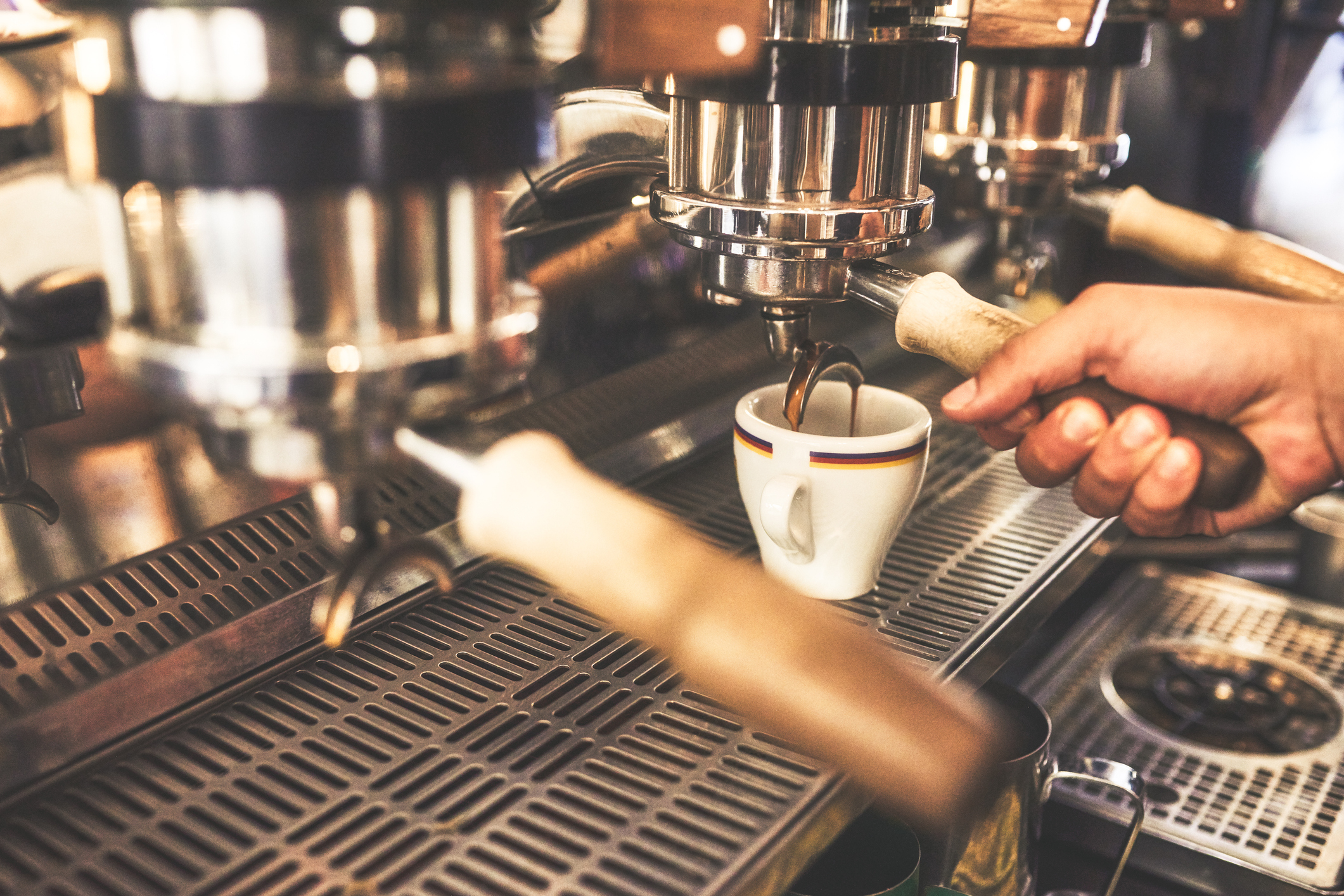The Long History of the Espresso Machine

Coffee lovers know that this isn’t just a beverage but an experience. The fascinating history of coffee is evidence of how important its stimulating effects have proved in the past. Coffee has always been a big business in the world, in the form of coffee shops, the coffee trade, or the coffee culture in general.
Those coffee lovers who want to experience this beverage’s bittersweet taste every time they take a sip have resorted to espresso as their go-to drink. For them, espresso is the true coffee and the pure essence of the beans.
Besides the rich texture and taste of espresso, the reduction in its brewing time contributed to its rising popularity. Before introducing espresso, it took almost 5 minutes to brew a coffee. This is why many coffee addicts resorted to espresso, a highly concentrated coffee that can be prepared in about 20 to 30 seconds.
What Is the History of Espresso?
Espresso is not just a beverage, but the preparation method that involves flowing high pressured near-boiling water through the coffee ground in a short time, which produces a concentrated coffee with a strong flavor and aroma, and a lingering aftertaste.
To create this perfect balance of flavor and texture and the creamy layer which sits atop the body of this drink, known as crema, one must ensure that espresso is prepared with the right technique.
The consistency of the grind, the temperature of the water, and the pressure with which it flows prove that espresso production depends on a molecular level. To get the perfect shot of espresso, many technological developments were contributed to creating the perfect machine that will deliver a delicious cup each time.
When Was Espresso Machine Invented?
Angelo Moriondo, an Italian, invented the espresso machine. He patented the first espresso machine in 1884, which held the name “New steam machinery for the economic and instantaneous confection of coffee beverage, method ‘A. Moriondo.”
Coffee was a huge business in the 19th century, and many coffeehouses flourished in Europe. However, coffee brewing was a tedious and slow process, so there were long lines of customers in these cafes waiting to get their cups of coffee.
The model of espresso machine that Angelo presented was a bulk brewer and was used for brewing a lot of coffee for many customers.
Other inventors also saw potential in this machine design and began exploring new developments to reduce the brewing time of coffee.
Luigi Bezzera, the “maker of liquors,” patented an even more improved specimen of espresso machine in 1901. He belonged to Milano and invented the machine to deliver single-shot espresso directly into a cup. The espresso machine he presented had a boiler with four groups that held various filter sizes containing coffee. It was called a Tipo Gigante. The large boiler had built-in chambers filled with water, which was heated and pushed until it streamed through tamped coffee. Luigi took Moriondo’s machine and introduced several changes to its design, including a portafilter, many brewheads, and other features still associated with modern espresso machines.
Bezzera’s machine made it difficult to control the temperature and pressure of water, which is why there was inconsistency in the espresso shots the machine produced every time.
Desiderio Pavoni bought the espresso machine prototype of Luigi Bezzera in 1903. Bezzera had more prototypes of his machine designed but didn’t have the money to expand his idea or market his product. Desiderio Pavoni helped him achieve that. He started producing espresso machines in 1905 and founded the company “La Pavoni.”
The “La Pavoni” machines were the first espresso machines installed in the United States. They were installed in 1927 at Reggio’s in New York. However, these machines worked on forcing steam through the coffee, resulting in a burnt flavor in the prepared cup. Pavoni introduced the design with pressure-release valves, preventing hot coffee from being splashed over the coffee maker. This feature was appreciated by baristas worldwide, and Pavoni worked along with Bezzera to develop their machine to perfection. They introduced their “cafeé espresso” at Milan Fair in 1906.
The espresso machine designed by Pavoni was an essential step toward developing modern espresso machines. Similar designs began appearing throughout Italy, as the machine could produce over 1000 cups of coffee per hour. This was a huge relief to baristas, but the process relied heavily on steam, which produced a burnt or bitter taste in the prepared espresso.
Cremonesi developed a piston pump in 1938, which forced not boiling but hot water through the coffee, which prepared a more rich taste and created a layer of creamy foam on top of the syrupy body of this coffee. This characteristic was then considered a prominent feature of espresso.
The first espresso machine created by Cremonesi was installed at Achille Gaggia’s coffee bar, but further development of this type of espresso machine was hindered due to World War II.
In 1946, when the effects of war died down, Gaggia started developing espresso commercial piston machines. In 1961, a pump-based machine was produced by Faema Company which ran on the mechanism of using an electric pump to deliver water for coffee under high pressure. The water was obtained from a fresh supply and went through a tube heated with a boiler. The heated water then went through the coffee, and its optimal temperature and constant supply ensured that it didn’t stay in the boiler and grew stale. All modern espresso machines are now based on this unique design.
Wrapping Up
Espresso machines are further developed each year, but they are still preferred as hand operated. However, there are designs available that conduct the process of grinding beans, tamping the coffee grind, frothing the milk, and preparing a finished cup of coffee in just one command.
